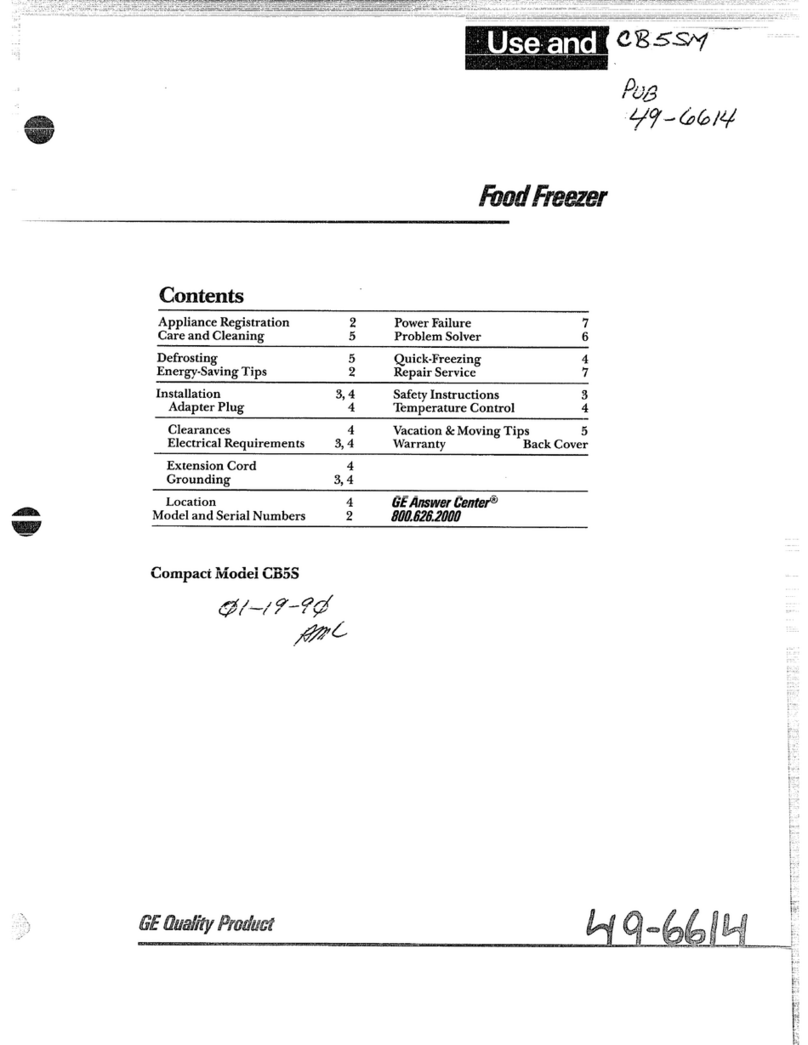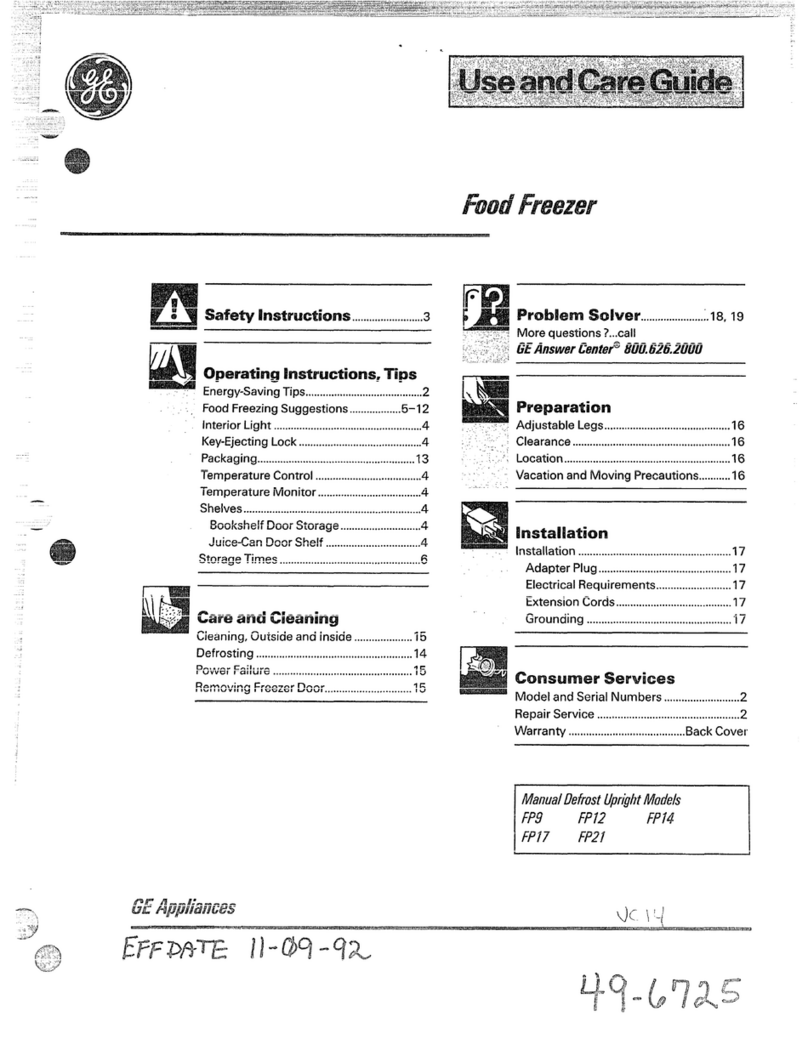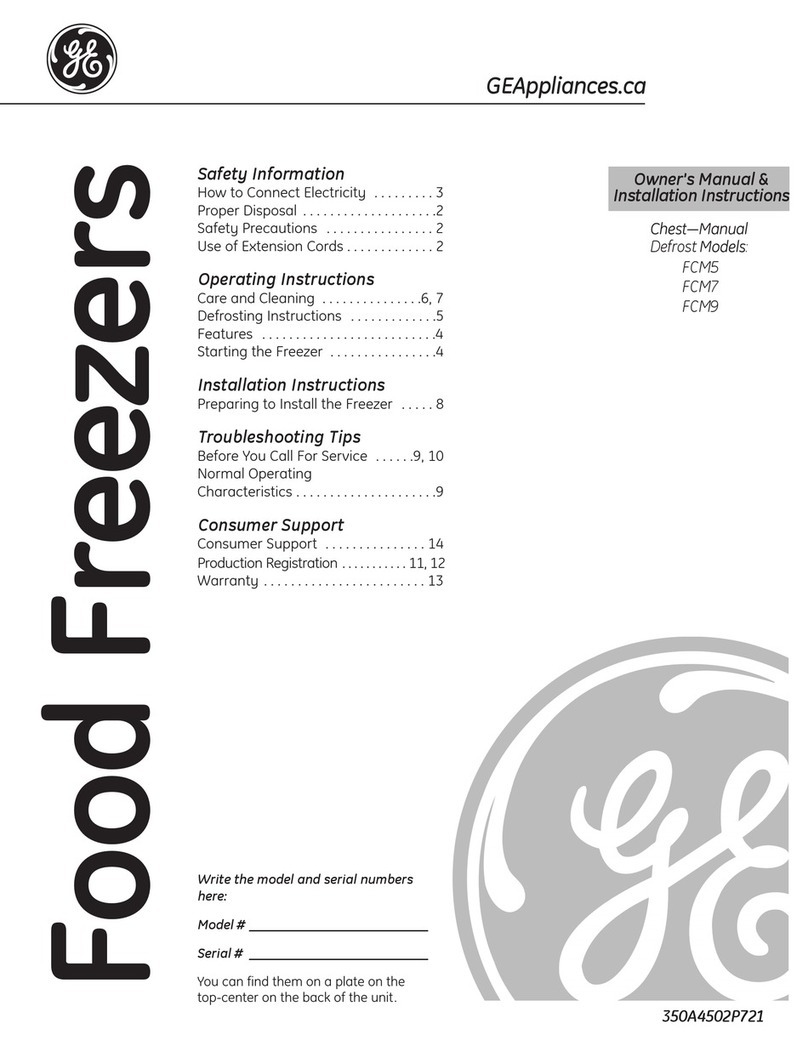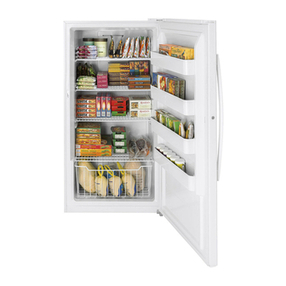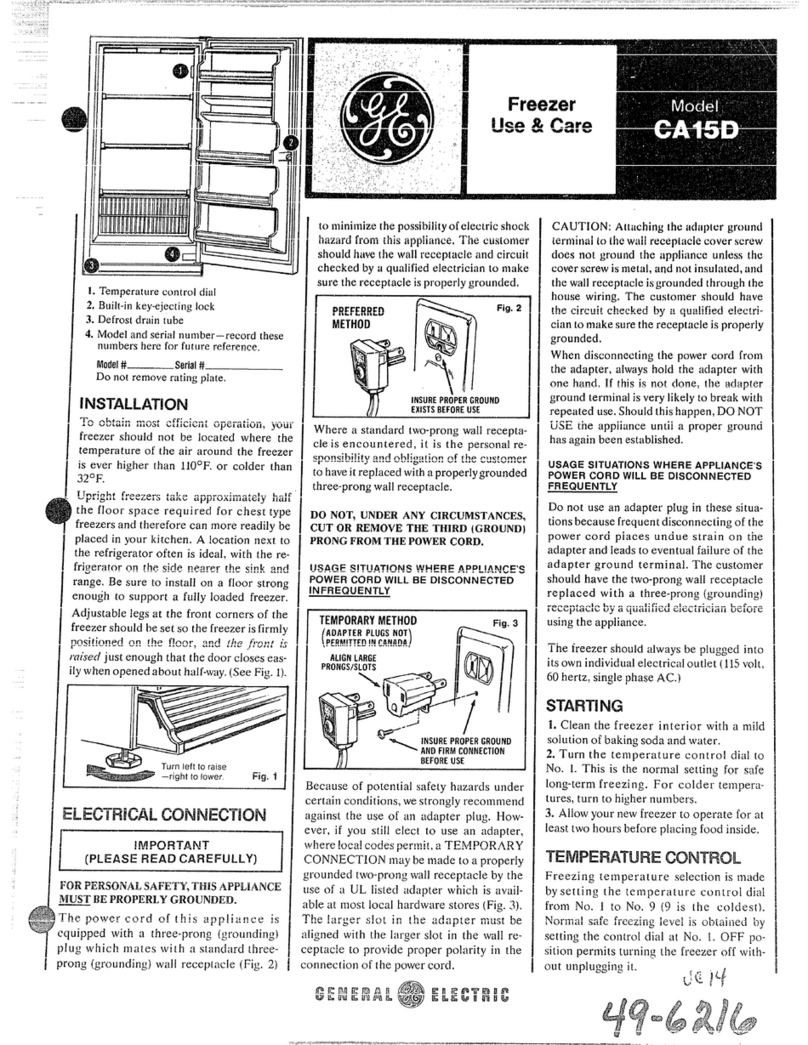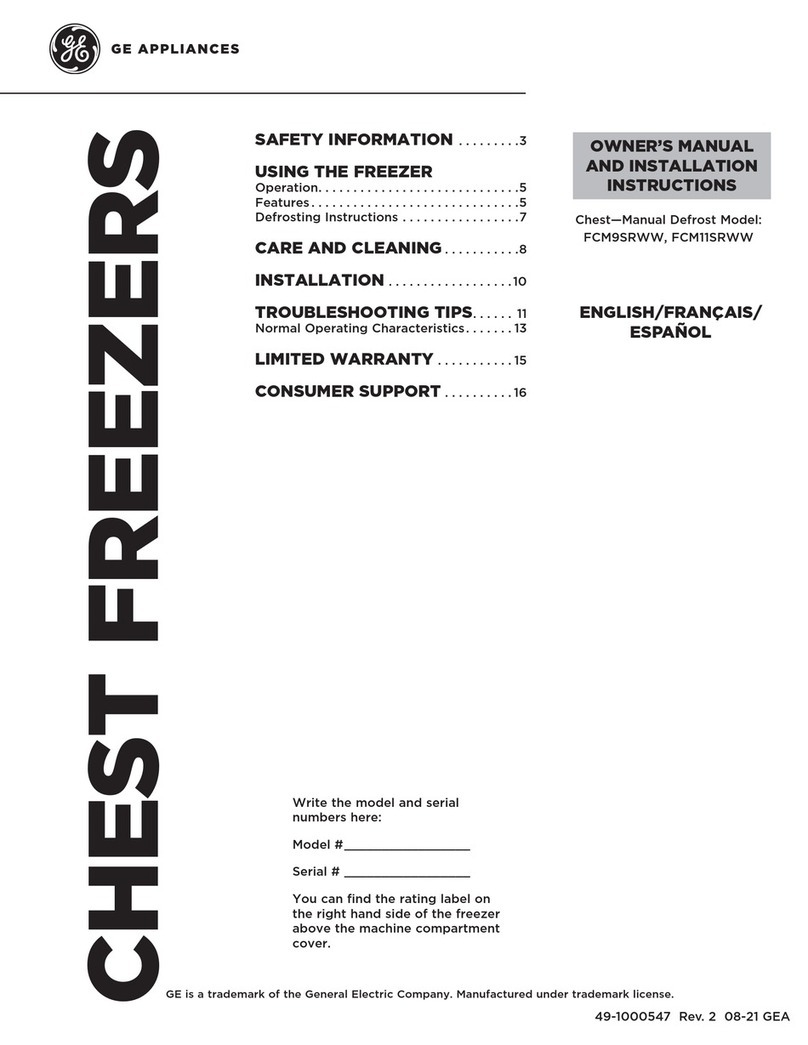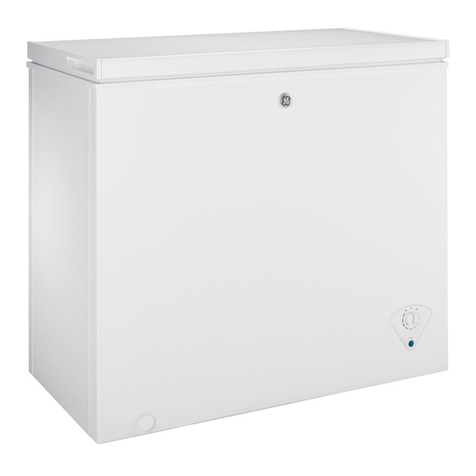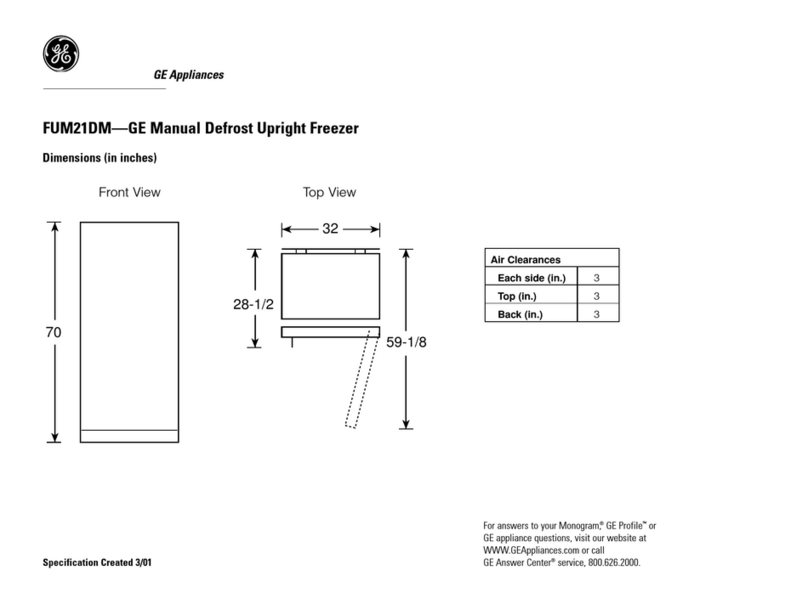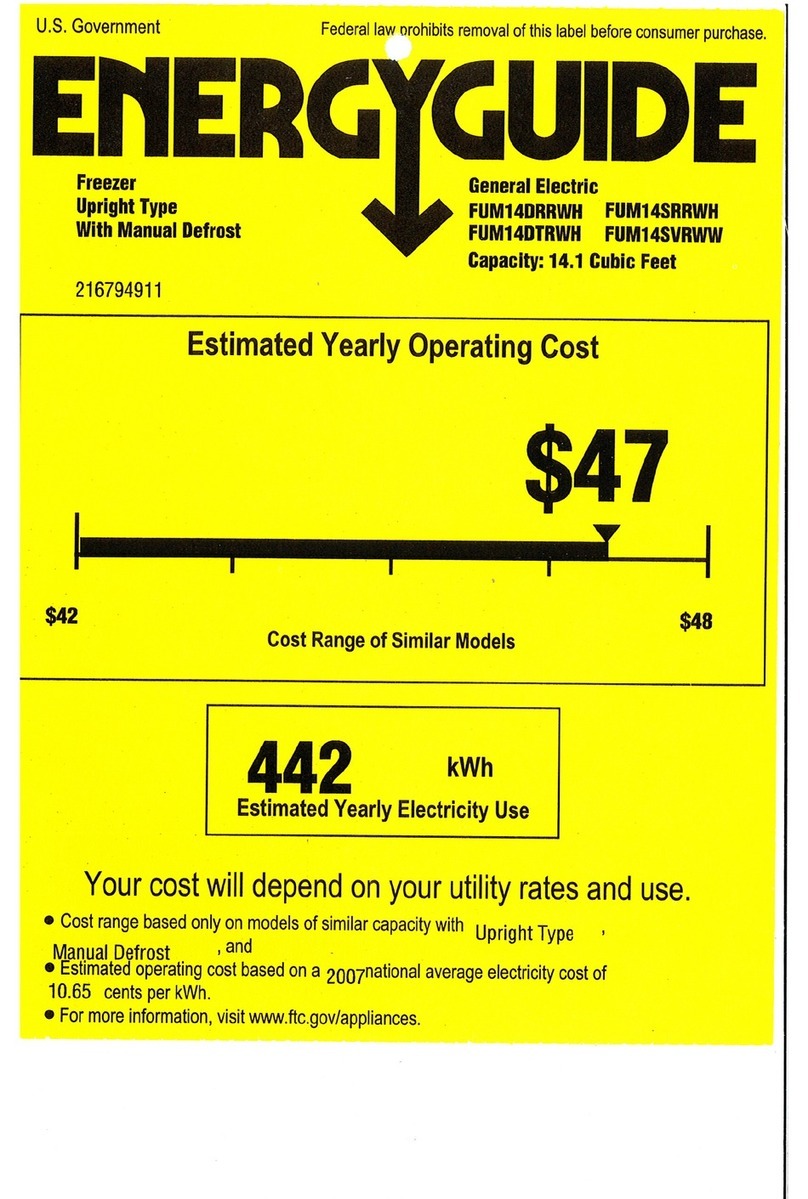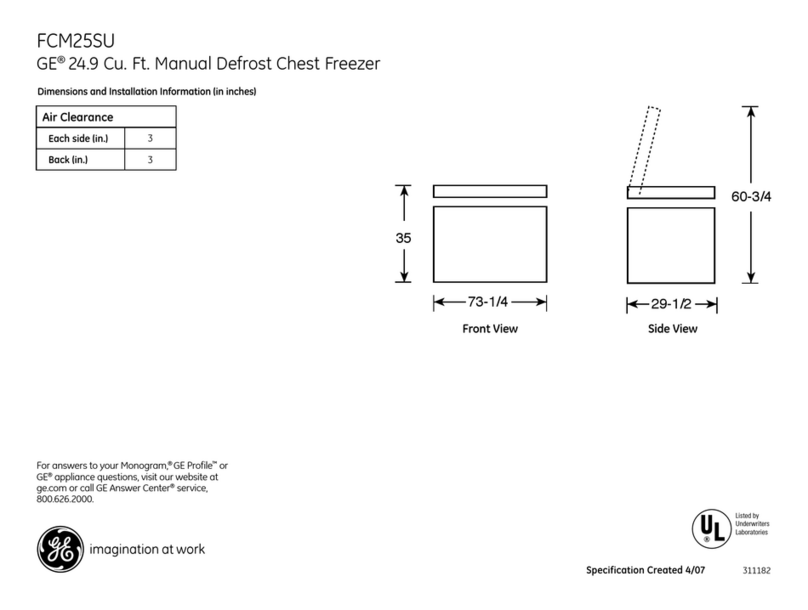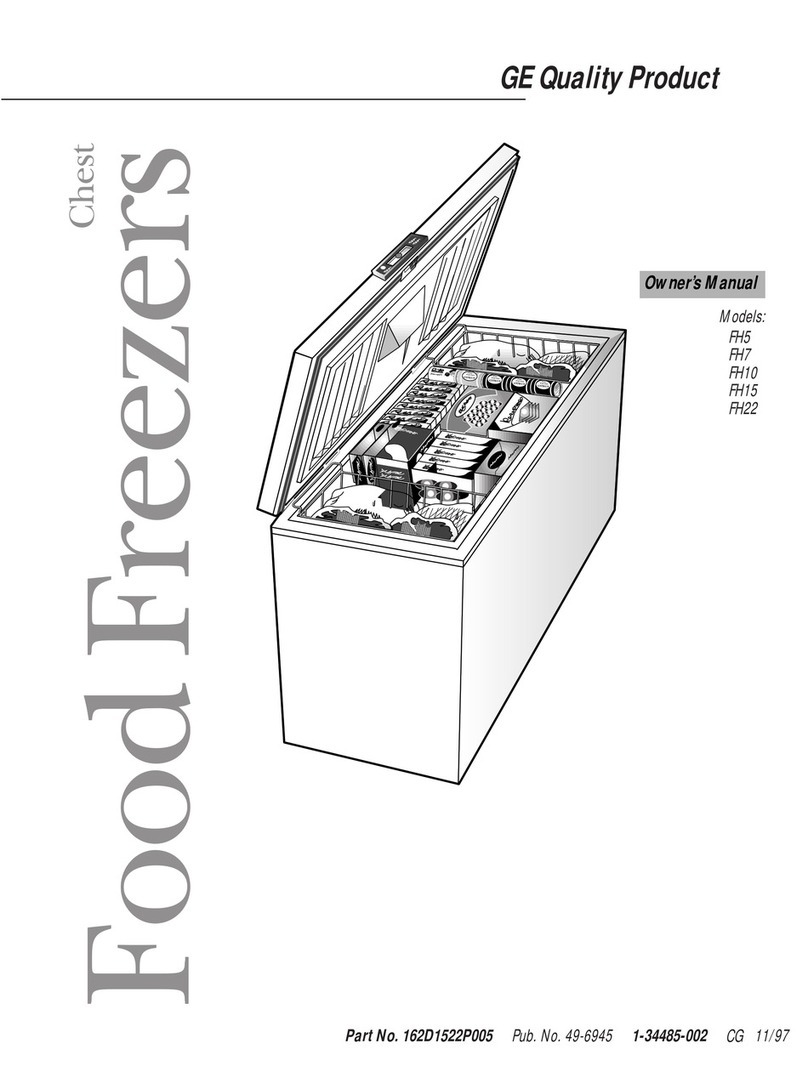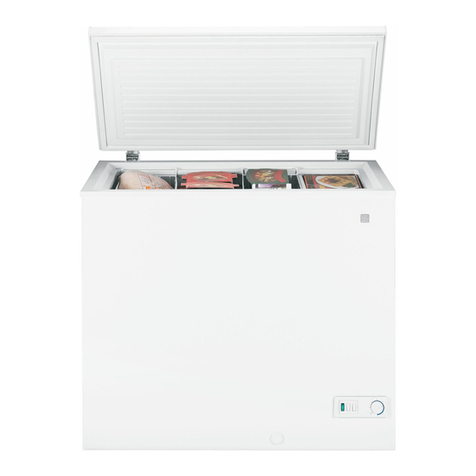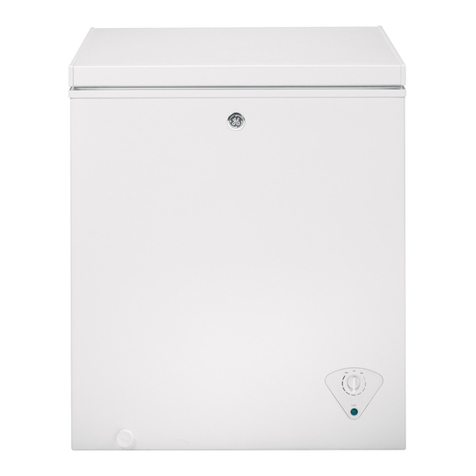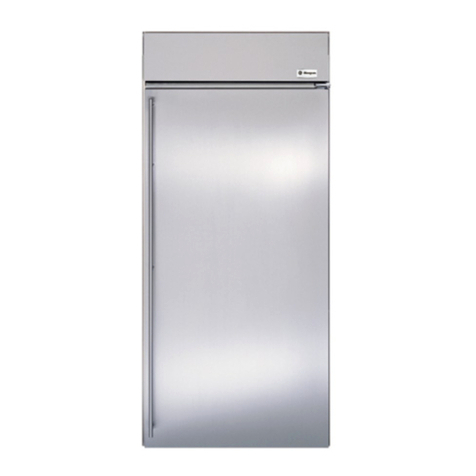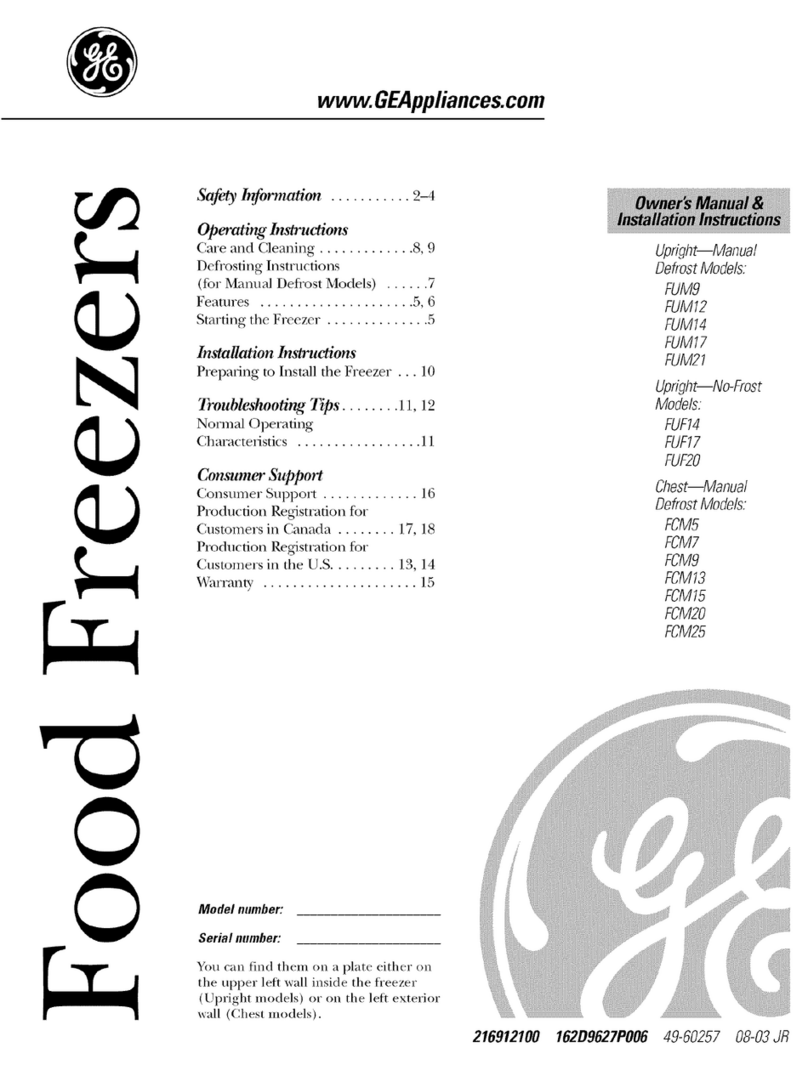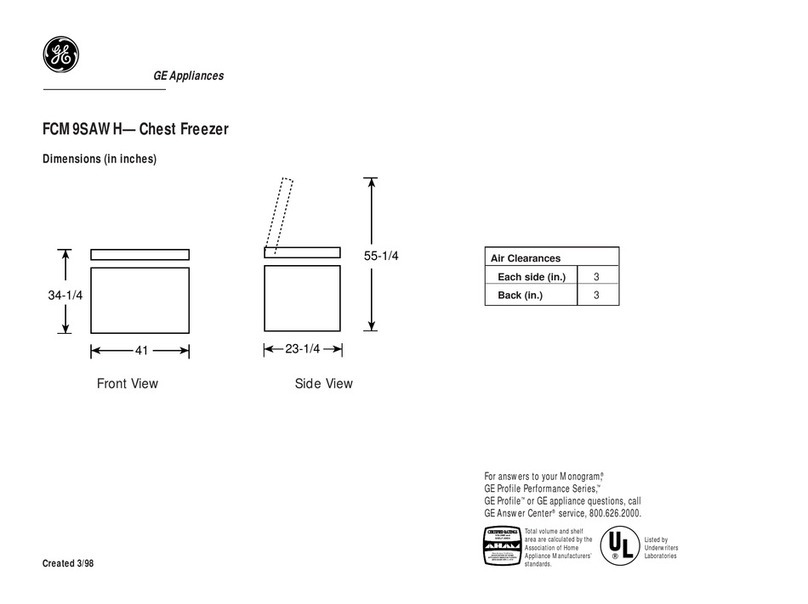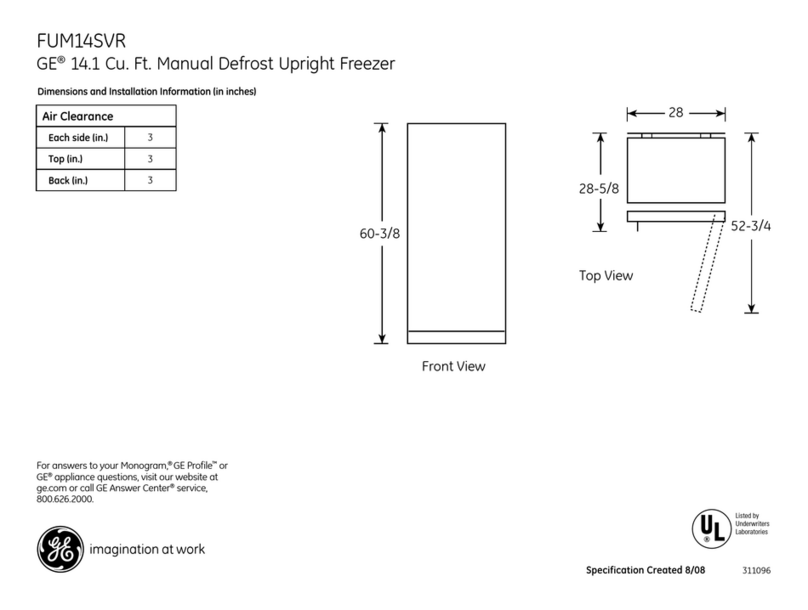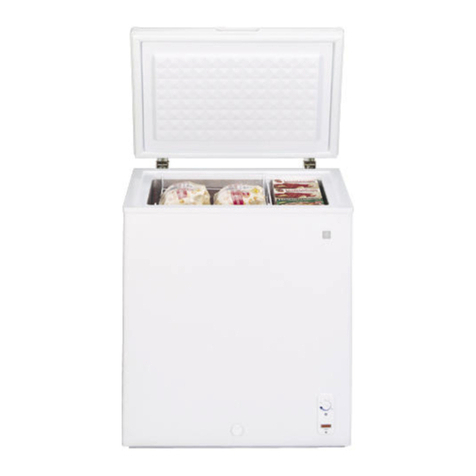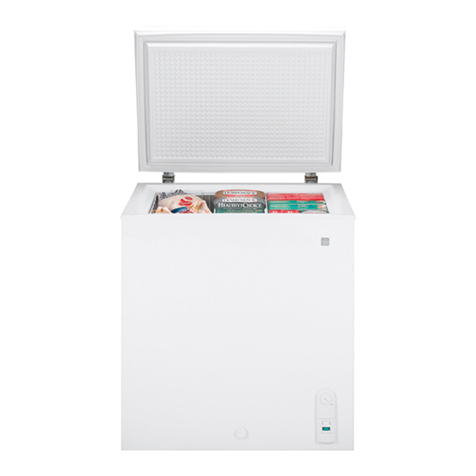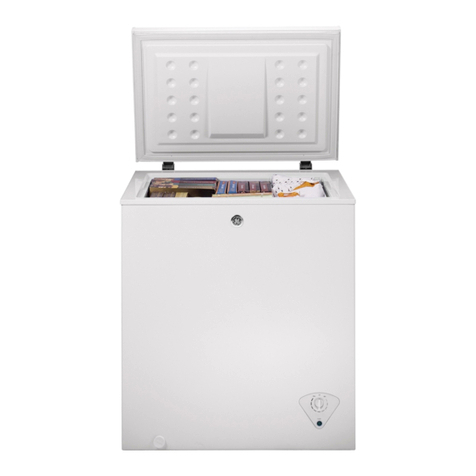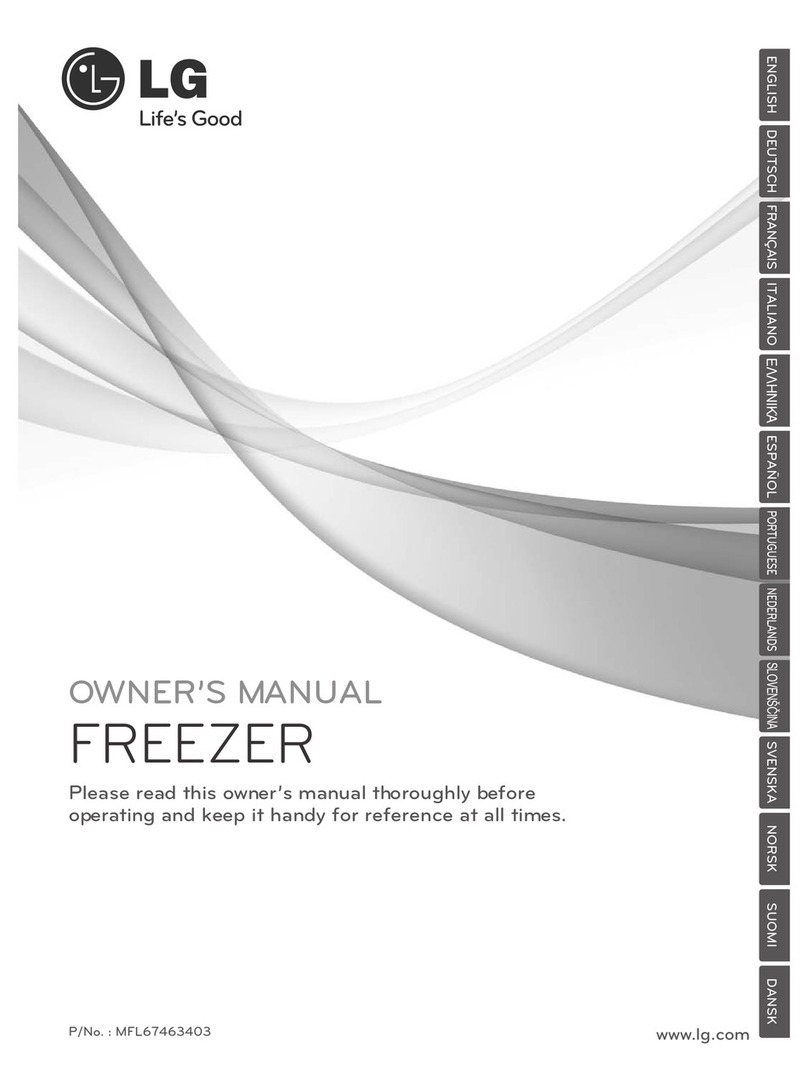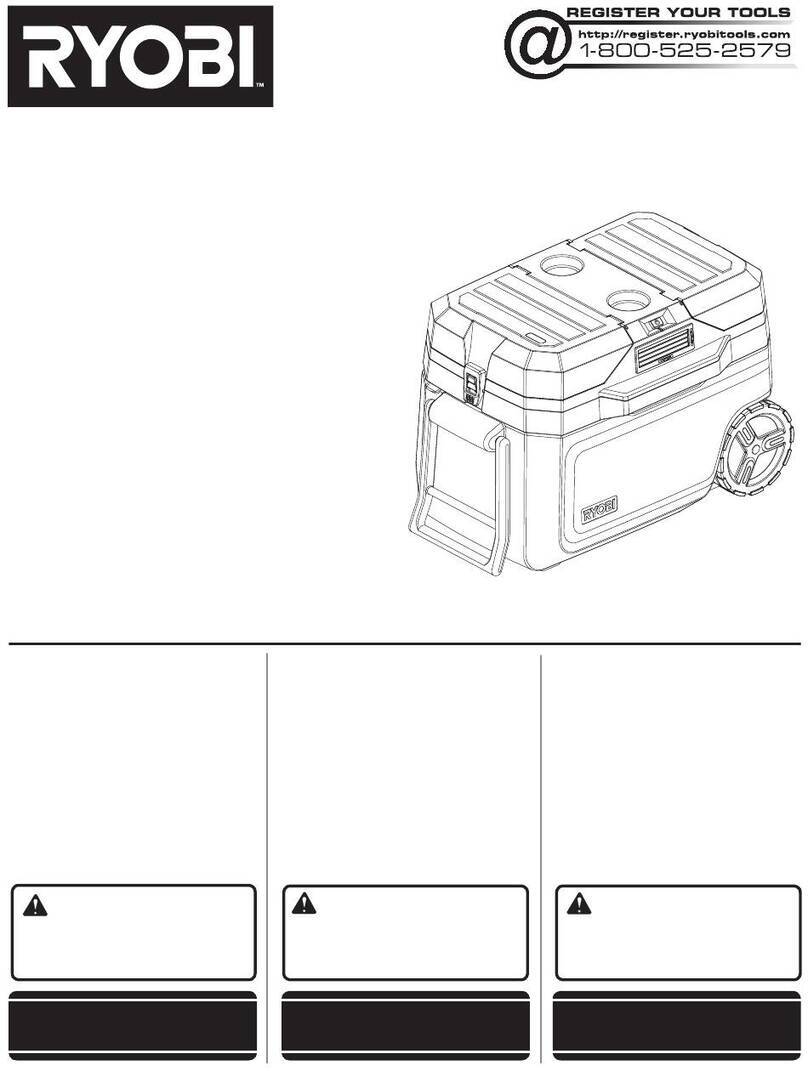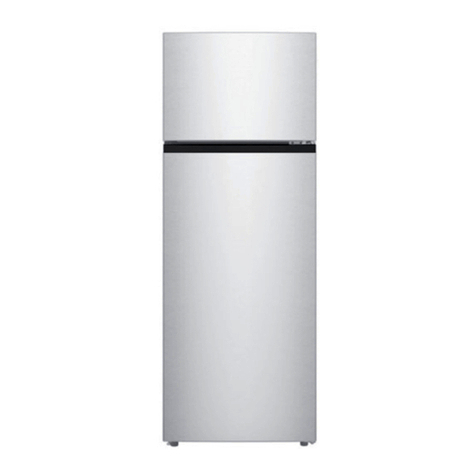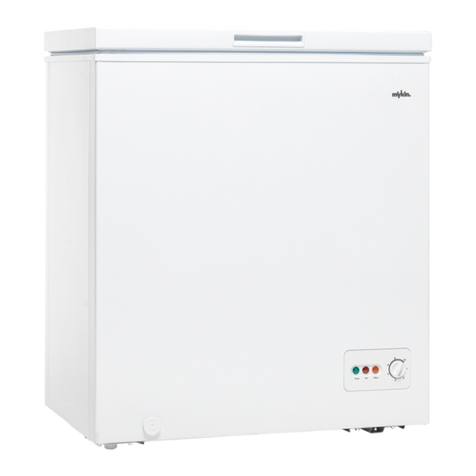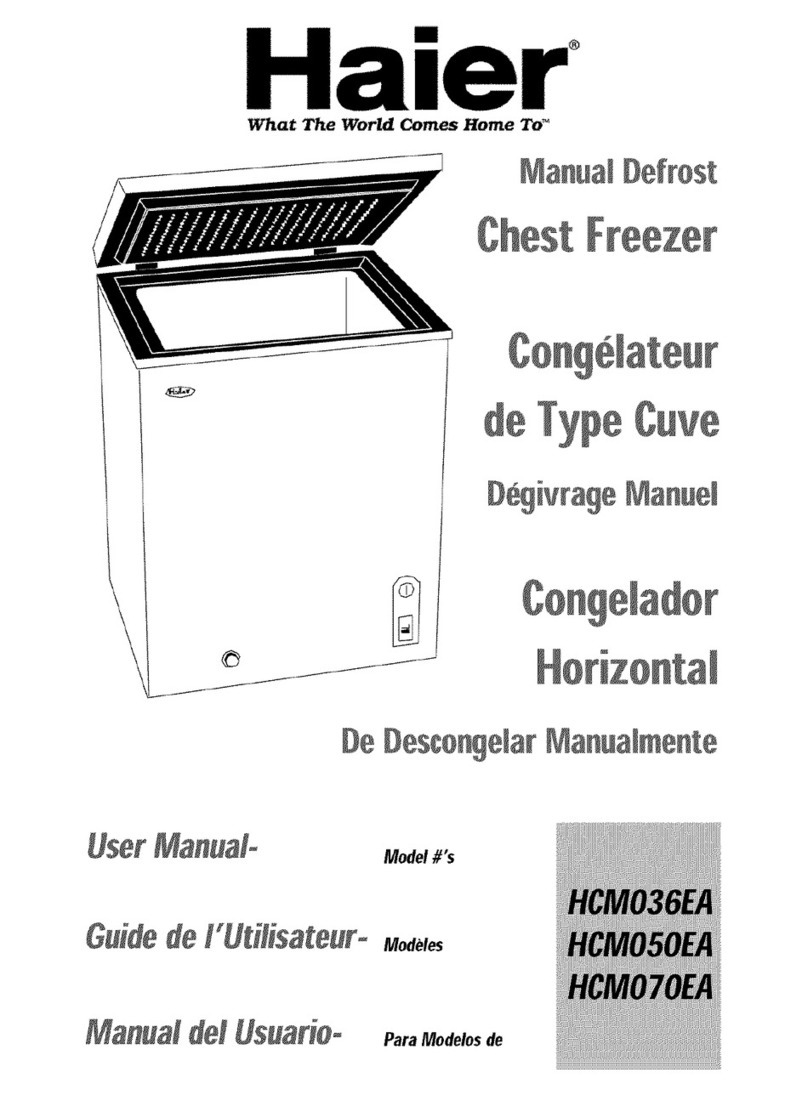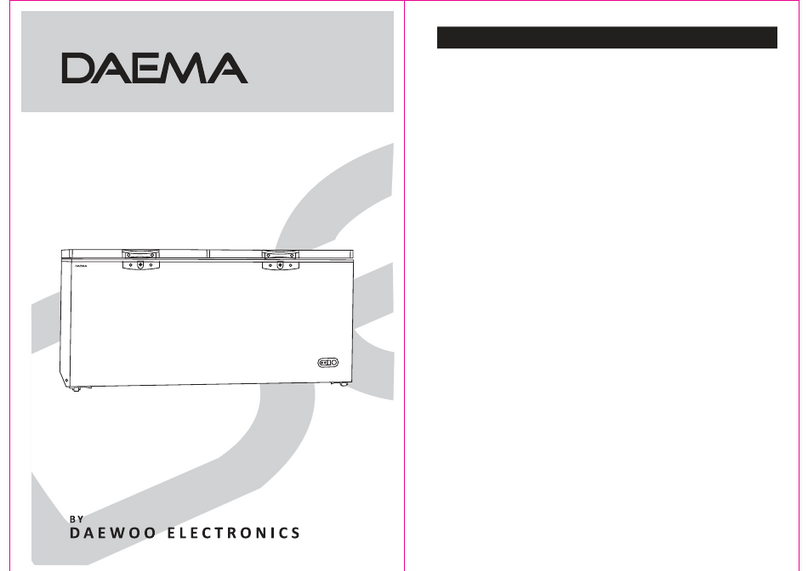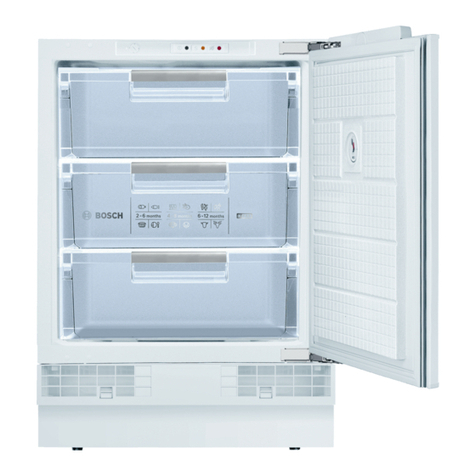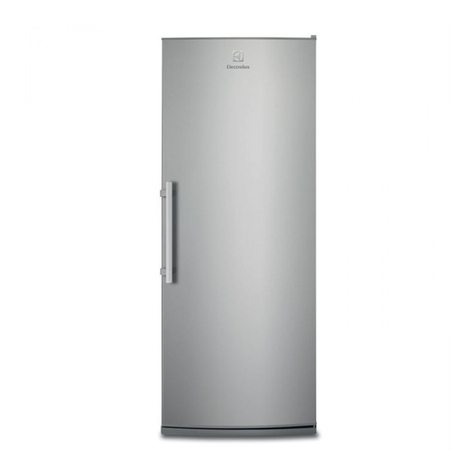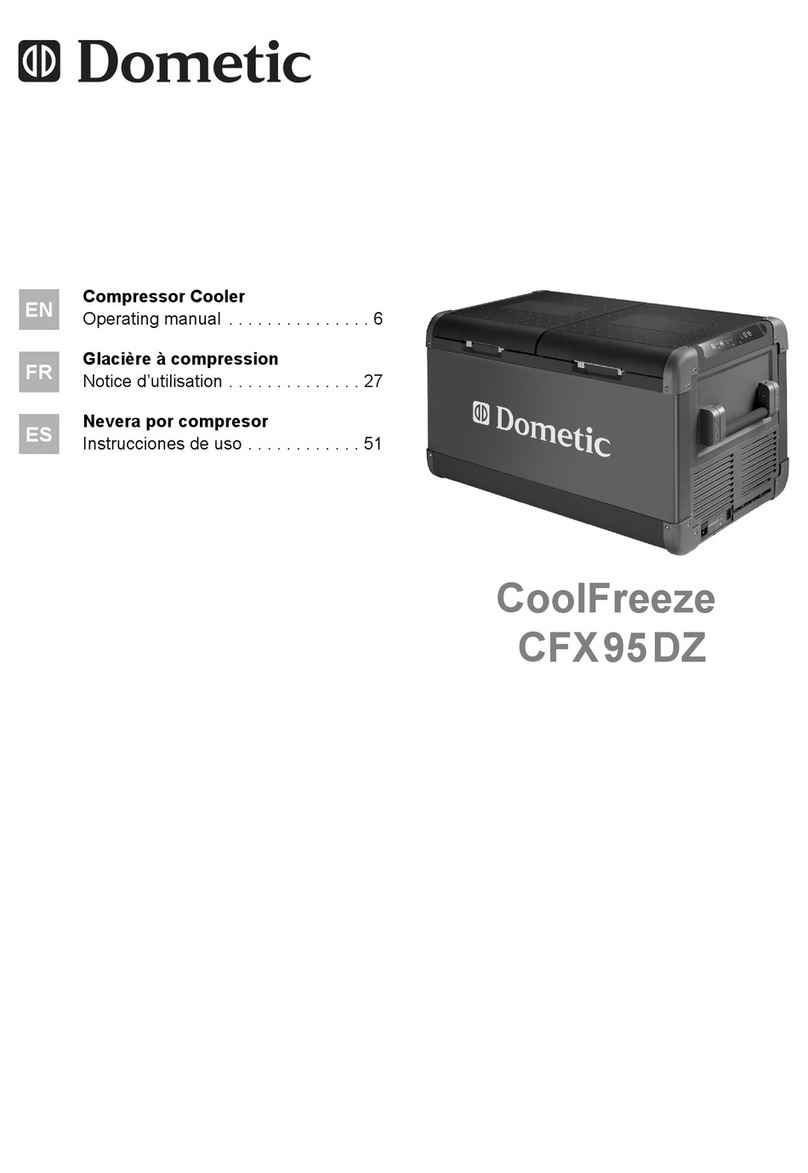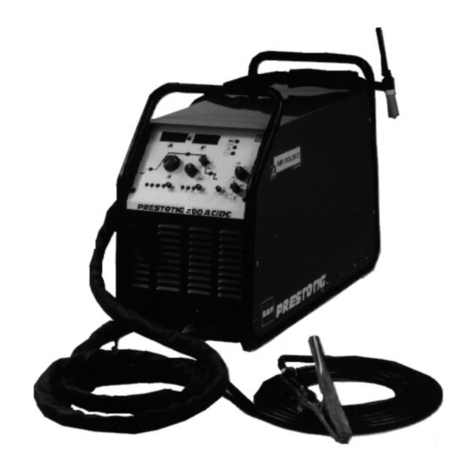suggested storageTimes
(Months)
FRESHMEATS 00 ~
Roasts (Beef, Lamb, Venison). ....6-12
Roasts (Pork &Veal) . . . . . . . . . . ...4-8
Steaks (Beef ). . .. . . . . . . . . . . . . . ..6-l2
Chops (Lamb) ...,,....,,,6.9,..6-9
Chops (Pork) . . . . . . . . . . . . . . . . ...3-4
Ground &Stew Meats .,,.........3-4
Variety Meats (Beef),. ...........3-4
Variety Meats (Pork). . , , , . . . . . ...2-3
Sausage (Pork) . . . . . . . . . . . . . . . .. l-2
Opossum, Rabbit, Squirrel. . . . . ...6-8
P~C)CESSEDMEATS
Bacon .........................l
Frankfurters ....................1/2
Ham (whole, half or slices) . . . , . ...1-2
COOKEDMEATS
Cooked Meats &Meat Dishes. ....2-3
Gravy &Meat Broth . . . . . . . . . . ...2-3
FRESH POULTRY
Chicken &Turkey (whole). . . . . . ...12
Chicken (pieces) . . . . . . . . . . . . . . ..9
Turkey (pieces) . ., . . . . . . . . . . . ...6
Duck &Goose (whole) ...........6
(Months)
COOKED POULTBY 00 ~
Pieces (covered with broth), ., . ...6
Pieces (notcovered), ............l
Cooked Poultry Dishes. ,., ., . . ...4-6
Fried Chicken, , ., . .,, . .,, ..,...4
FISH
Shellfish ... ... ,,, ,,, ,,, ,,, Upto4Upto4
Lean Fish ......................6-8
Fatty Fish, .....................2-3
Shrimp (raw, unpeeled), ., .......12
Shrimp (cooked). .., ...........,3
PRODUCE
Most Fruits&Vegetables .........8-12
Asparagus. ., . . . . . . . . . . . . . . ..,.6-8
Mushrooms ................,,. .Upto6
Onions ........................3-6
Citrus Fruits, ..,, .,, ............3-4
Potatoes (french-fried) . . . . . . . . ...2-3
BAKERY GOODS
Breads, Quick(baked) ...........2
Breads, Yeast(baked). . .. . . . . . ...4-8
Breads, Yeast(unbaked). . . . .. . ...1/2
Cakes.........................Uptol
Giblets ........................3 Cookies .......................4
Game Birds ., .,, . . . . . . . . . . . . . ..8-12 Pastry (unbaked) ................2
Pies (baked) ....................Uptol
Pies (unbaked) ..................2
(Months)e
DAIRY PRODUCTS 00 ~
Butter,...................... ..5-6
Cottage Cheese,,.,,....,,.,,, ,,1
Soft Cheese..,,,,,,,,...,,,,., .4
HardorSetni-hard Cheese. ,. , .,,6-12
Eggs, , .,,.,,.,..,..,,,,.,,,, .,12
lce Cream, Sherbet, ... ..,.,,.,, .Upto
Milk, .........................,1
OTHER FOODS
Candies. .,...,.,,......,,,.. ,,12
Left-overs(cooked). . .. .. . . . . .. Uptoto
Pizza..........................1
Prepared Dishes. , .,, ..,.,.,. . ..2-3
Sandwiches. ..,, ,, ..........,,,Uptol
Soups, Stews, Casseroles ........2-3
Newtechniques are constantly being de-
veloped. Consultthe County Extension
Service oryourlocal UtilityCompanyfor
the latest information on freezing and
storing foods.
FreezingMeat, Fish,~OU[try&Game
Preparation and
packaging
Package meat, poultry, fish and game
inmoisture/vapor-proof material such
as aluminum foil, cellophane, freezer
foilorplastic bags, Excludeasmuch air
as possible. Label and freeze atonce.
NOTE: Packages of fresh meats and
poultryascommonly purchasedin
retail stores are not suitably wrapped
for freezing. Rewrap inmoisture/vapor-
proof material,
Meat
Remove asmuch bone and fatas
possible from meat before packaging.
Donotsaltmeat, When individual
piecesofmeatare packagedtogether,
place doublethickness offreezerwrap
between them for easier separation
during thawing.
Clean thoroughly before packaging.
Pad .sflarp [Jr protruding boneswith
folc~edfreezer paper or aluminum foil,
Wrap giblets separately.
WildGame
The same methods suggested for
poultry and meat may be used for
preparing and freezing wild game.
Fish
Clean fish thoroughly before packag-
ing. Cut-up pieces of “lean” fish such
ashaddock and cod should be rinsed in
brine made with 2/3 cup of pure table
salt per gallon of water to reduce leak-
age during thawing. Keep in solution
not over 1minute. Brine isunnecessary
for whole fish or fatty fish such as
salmon or mackerel.
Oysters,Clams,Shrimps,
scallops
Wash shells in running water (soak
clams) and shuck, working quickly.
Discard shells. Donotwash clams or
oysters, Scallops may be rinsed in
fresh water. Pack in freezer carton
and freeze immediately. Shrimps are
best if frozen uncooked, Remove and
discard heads and black vein. Wash
and package in freezer containers.
Crabsand Lobsters
Chill fish and remove back shell.
Steam or boil in water for 15 to 20
minutes. Cool thoroughly, then pick
edible meat from shells and package
in proper containers. Seal and freeze
immediately.
Thawing
Frozen meat, fish or poultry should be
left in the original package and thawed
in the refrigerator or cooked frozen.
Allow approximately 5hours per
pound to thaw meat in the refrigerator.
When cooking frozen meat, increase
the cooking time by approximately
1/3 to 1/2 if cooking con.ventionally–
much less if cooking with microwaves.
[f necessary to thaw meat quickly, thaw
at room temperature—allowing only
2hours per pound.
Don’t refreeze meat that hascompletely
thawed; meat, whether raw or cooked-=
<--
can be frozen successfully only onc <~’$~~
.
.-
